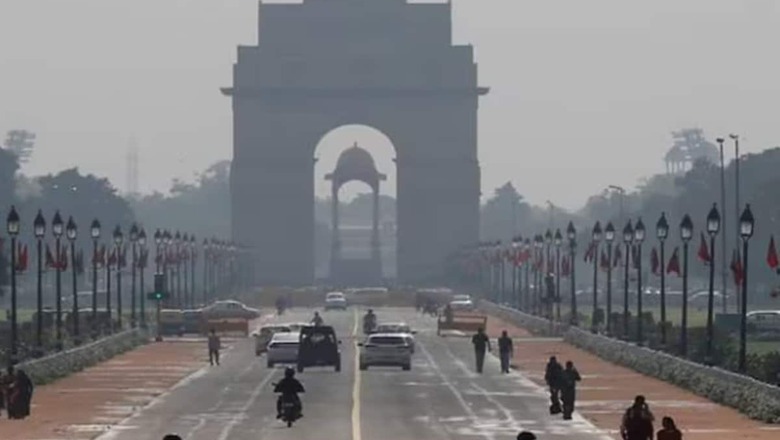
views
In a primary survey conducted by global real estate consultancy in India, Knight Frank across eight markets of India, it was found that Karnataka’s capital city Bengaluru has the best of high streets that provide significantly better shopping experience with 4 of its markets making to the top 10 list.
As per the insights, MG Road (Bengaluru) tops the list of high streets in India, followed by Somajiguda (Hyderabad) in the second position, Linking Road (Mumbai), and South Extension (Delhi) are also listed among the top 10 high streets in the country.
In many cities, the term “high street” refers to a primary street or main thoroughfare that serves as the central commercial and retail hub of the city. It is typically lined with a variety of shops, boutiques, restaurants, cafes, and other businesses, making it a bustling and vibrant area.
This ranking study is part of Knight Frank India’s flagship annual retail report ‘Think India Think Retail 2023 – High Street Real Estate Outlook’ in association with Phygital Retail Convention 2023.
Top 10 High Streets
10
Bengaluru
Bengaluru
Brigade Road
Church Street
The top ten high streets are those that are convenient in terms of access, parking facilities and with a varied assortment of retailers. The layout and master planning of the high street define the visibility. Inward looking markets like Khan Market (Delhi) and DLF Galleria (Gurugram) scored very low, whereas markets aligned along the access road like MG Road (Bengaluru), Somajiguda (Hyderabad), Linking Road (Mumbai), Anna Nagar, Park Street and Camac Street (Kolkata) scored high.
Ahmedabad and Pune do not house any of the top 10 high streets. The survey was conducted across 30 high streets across the top eight cities of India based on parameters that determine the quality of experience high streets provide to customers.
Ahmedabad’s SG Highway has the highest spending quotient amongst the 30 high streets surveyed. Contrary to common perception, the top high streets are not the ones demanding the highest rent.
High Average Ticket Price retail categories such as Electronics, Accessories and Home & Lifestyle that have a lower presence in micro markets like Connaught Place, Lower Parel, Khan Market, Colaba Causeway make the Spending Quotient low in these seemingly lucrative markets for retail brands.
Shishir Baijal, chairman and managing director, Knight Frank India said, “Retail is a highly competitive business and, more recently with the advent of malls, is also closely related to the overall customer experience. Globally, cities are identified by their highstreets, often one of the main attractions of the city, and the brands on these streets – a barometer of the city’s worth on a global platform. But as we evolve, customer experience is the key and due to their traditional nature, high streets often fail to provide amenities like those of shopping centres.”
“However, as cities in India are modernising, we see many high streets in the country reviving as facilities like access, parking, store visibility etc. have improved. Our estimations say that the average per square metre revenues of high streets will be significantly higher than those of malls in FY 2023–24. Going forward, we expect that high streets provide a good retailing experience to customers to see a revival even as other formats of retail continue to thrive,” Baijal added.
Modern and Non- Modern Retail Arenas
According to the findings, NCR, Kolkata, and Ahmedabad are the top three markets with a high concentration of non-modern retail arenas, while Ahmedabad and Kolkata are yet to witness the foray and expansion of many large national and foreign retailers on its key high streets, NCR’s dominance across the non-modern retail arenas stems from the fact that both traditional and modern retail outlets have coexisted and flourished to serve the mixed bag of ethnicities and cultures from nearby states for many years now.
NCR followed by Hyderabad, Ahmedabad and Bengaluru occupies the highest percentage of modern, non-modern retail arenas in the country.
High Street Rental Trends in Prime Indian Cities
The average monthly rents to lease retail space on the high streets vary across the top eight cities. Despite real estate rent corrections across all asset classes, the post pandemic bounce-back led to numerous transactions being closed at rents higher than previously witnessed. Some of the high streets captured in the survey are the country’s most expensive retail hubs. New Delhi’s Khan Market, Gurugram’s DLF Galleria, and Mumbai’s Linking Road and Turner Road are three high streets in the country where retailers have to shell out hefty rents to maintain brand presence.
The Outlook – Potential Consumption in FY 2023-24
Indian high streets occupy only 6% of the total gross leasable area as compared to the shopping mall stock, however, in terms of efficiency, high streets offer 100% efficacy due to low maintenance costs, whereas in the case of shopping malls, the efficiency can range anywhere between 50% – 60% depending on the grade of the shopping mall. This is largely due to high maintenance costs for common areas, central air conditioning and escalators.
Opportunities for Retailing in Modern Retail Arenas on High Streets
After a series of disruptions in consumption due to the pandemic, the retail industry seems to be back on track with consumption surpassing pre-pandemic levels across regions. In the backdrop of the flourishing e-commerce sector, Phygital or omnichannel retailing has become the norm of the day.
Knight Frank India has assessed the potential of retailing in the modern retail arenas in the high streets. After careful assessment of the average trading densities in top 10 retailer categories across 30 high streets, the potential consumption in the high streets is derived at nearly USD 2 bn for FY 2023-24. This represents 19% of the potential consumption of USD 11 bn projected for operational shopping mall stock in FY 2023-24. While on an overall basis, high streets may appear to have limited consumption potential, when compared on a per sq m basis the consumption story is significantly different.
Comparison With Shopping Malls
Globally, malls have emerged as family entertainment and shopping destinations with a confluence of retail categories under one air-conditioned roof. High streets, on the other hand, serve as the core of friendly neighbourhood shopping and utilitarian functions. Both these formats have different characteristics and command captive interest from retailers and consumers. There are many differences between the two when it comes to stock availability in the top 8 cities, retailer category comparison, and brand origin comparison.
Apparel and Food & Beverage remain the top two categories in both shopping malls and high streets. In the case of shopping malls, the second position is jointly shared by Entertainment and Food & Beverage, whereas in the case of high streets, the ‘Others’ category emerged as the second favourite along with Food & Beverage, followed by Accessories.
The Others category comprises gymnasiums, photo studios, and miscellaneous other retailers that give a sales invoice and create a vast footprint on the modern retail arenas in high streets compared to shopping malls. This category’s share is the second highest in high streets at 18%. However, high streets lack entertainment options, which comprise 2% in comparison to 20% in shopping malls.
Read all the Latest Business News, Tax News and Stock Market Updates here




















Comments
0 comment